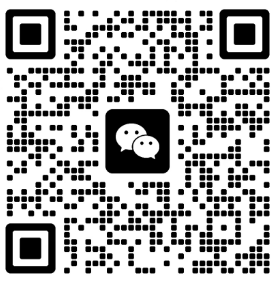1. Elongation at break - the elongation at which the specimen breaks.
2. Breaking load - the force that causes fracture in tensile, compression, bending, or torsion tests. In tensile tests of textiles and yarns, the breaking load is also known as the breaking strength. In tensile tests of thin strip materials or small diameter wires, it is difficult to distinguish between the breaking load and the maximum load, so the maximum load is considered the breaking load.
3. Bond strength - The stress required for the separation of two pieces of metal bonded with adhesive (pulled apart by the bonding zone).
4. Cross beam - The main beam of the testing machine, which moves up and down to generate pressure or tension. The fixture is connected to the beam, and the sample is connected to the fixture. Measure the movement distance of the beam throughout the entire process by rotating the photoelectric encoder.
5. The crossbeam slingshot curve cable connects the motion beam and mechanical electrical appliances, which serve as weighing sensors to provide voltage and load signals to the machine.
6. Deformation energy - The energy required to deform a material to a specified amount, which is the area enclosed by the stress-strain curve to the specified strain.
7. Adhesion - The degree of adhesion between the coating and the underlying layer
8. Adhesion Index - Determination of adhesion between enamel and ceramic products and metal sheets
nine α Rockwell hardness - the permeability resistance index of a plastic surface to a specific indenter that bears a specific force applied by a Rockwell hardness tester. The larger the value, the higher the hardness of the indentation.
10. Axial Strain - The direction of force or strain is the same as the direction of force.
11. Analog circuit board - A circuit board that converts analog signals into digital signals.
12. Pin - a steel pin that connects a fixture to a joint.
13. If automatic return vehicle - return vehicle is set, the beam will automatically return to zero after the detection is completed.
14. Deformation under load - measures the ability of hard plastics to withstand permanent deformation and the ability of non hard plastics to restore their original shape after deformation. The testing methods for testing these two deformations are provided. For hard plastics, deformation refers to the percentage change in specimen height after 24 hours under a specified load. Regarding non rigid plastics, the proportion of height change after 3 hours under load and the recovery rate after 1 to 0.5 hours after load removal are described.
15. Peel strength - Measure the bonding strength of honeycomb core material nodes, which is equal to the tensile load applied to the honeycomb panel divided by the product of panel width and thickness.
16. Denier - The unit of linear density, which is the mass (g) of fibers, yarns, or other textile threads per 9000 meters.
17. Drying strength - the strength of the bonded part measured immediately after drying or conditioning in the specified environment for a period of time.
18. Ductility - The range within which a material maintains plastic deformation and continues to fracture. Elongation and cross-sectional shrinkage are common indicators of ductility.
19. Dynamic creep - Creep extrusion expansion under variable loads or temperatures - The diameter or thickness of polymer melted from a hard mold is usually greater than the diameter (or notch) of the hard mold at any time. In general products, the diameter or thickness ratio is 1.20-1.40, and the commercial grade polyethylene is 1.50-2.00. High molecular weight polymers will be higher. It is a display of the elasticity of polymers. Polymers with greater elasticity have greater expansion. Of course, the expansion of the material extruded through the stretching process will decrease, and the diameter (or thickness) of the extruded material will be much smaller than the diameter (or thickness) of the hard mold or notch.
20. Diameter - Used when the cross-sectional area of the specimen is circular.
21. Load eccentricity - the distance between the actual line of action of the compression or tension load and the line of action that generates the equilibrium stress on the cross section of the sample.
22. Edge Tear Strength - Fold the paper into a V-shaped notch and place it in a tensile testing machine to measure its tear resistance. The results are expressed in pounds or kilograms. (See tear strength)
23. Elastic hysteresis ---- The difference between the strain energy required to produce a specific stress and the elastic energy under stress is the energy consumed by the material in the form of heat in a cyclic dynamic test. Elastic hysteresis divided by elastic deformation energy equals damping capacity.
24. Elastic Limit - The maximum stress is applicable to materials without permanent deformation. For metals and other materials with obvious line segments in the stress-strain curve, the elastic limit is approximately equal to the proportional limit. For materials without significant proportional limit, the elastic limit is only an approximation (significant elastic limit).
25. The apparent elastic limit stress-strain curve does not have an approximate value of the elastic limit of the material with a clear linear cross-section, which is equivalent to a strain rate greater than 50% of the zero stress point. It is also the stress at the tangent point between the stress-strain curve and the inclined straight line, which is consistent with the stress axis and has a slope greater than 50% at the beginning of the curve.
26. Elasticity - The ability of a material to restore its original shape after the load that causes it to deform is eliminated.
27. Elongation - Measurement of the ductility of a material in a tensile test. The elongation of the original gauge length divided by the original gauge length. The greater the elongation, the better the ductility. Elongation cannot be used to predict the characteristics of materials subjected to sudden or repeated loads.
28. Embrittlement - a decrease in ductility caused by physical or chemical changes.
29. Durability - Another term for fatigue limit.
30. Engineering stress - The load applied in a tensile or compressive test divided by the cross-sectional area of the specimen. When calculating engineering stress, the change in cross-sectional area of the specimen with increasing or decreasing load is ignored. Also known as specified stress.
31. Extensometer - A tool for measuring linear dimensional changes, also known as a strain gauge, typically based on strain measurement techniques.
32. Bending resistance - The ability of a material to withstand repeated compressive loads without causing damage.
33. Bending modulus of elasticity - Another term for bending modulus.
34. Bending Strength - The maximum fiber stress generated by a specimen before rupture or fracture in a bending test. In the bending test, if the sample does not break, the bending yield strength is used instead of the bending strength. Another alternative term is fracture modulus.
35. Bending test - A test method for testing the performance of materials under simple supported beam loads. The sample is supported on two blades and a load is applied at the midpoint of the sample. Due to the increase in load, it is necessary to calculate the maximum fiber stress and maximum strain.
36. The results are plotted on the stress-strain curve, and the maximum fiber strength at the fracture is the bending strength. In the bending test, if the sample does not break, the bending yield strength is used instead of the bending strength.
37. Connector - A connector connected to a force sensor or machine, allowing the fixture to be connected to the machine.
38. Fatigue - The permanent structural change in a material caused by changes in stress and strain.
However, for glass, fatigue is tested using long-term static tests, while for other materials, fatigue is similar to stress rupture. Usually, fatigue failure occurs when the stress level is below the elastic limit.
40. Fatigue Life - The number of cycles during which a material undergoes changes in stress and strain before fracture. Fatigue life is a function of stress changes, specimen geometry, and test conditions, and is the fatigue cycle at various bending stress levels.
41. Fatigue Limit - The maximum fluctuating stress that a material can withstand under an infinite number of cycles, usually determined by the S-N chart, equal to the stress at the asymptote of the corresponding point in the fatigue life of a large number of fatigue test specimens. Another alternative term is endurance limit.
42. Fatigue Notch Coefficient - The ratio of the fatigue strength of specimens without stress concentration to the fatigue strength of specimens with notches or other stress concentrations. Due to plastic deformation leading to stress release, the fatigue notch coefficient is generally smaller than the theoretical stress concentration coefficient. Replace the term with intensity decay rate.
43. Fatigue ratio - The ratio of fatigue strength or fatigue limit to tensile strength. For many materials, fatigue ratio can be determined by data obtained from tensile tests to determine fatigue characteristics.
44. Fatigue strength - In fatigue testing, the maximum value of the fluctuating stress required for a specimen to rupture after a specified number of cycles of loading,
45. Fatigue strength attenuation coefficient - another term for fatigue notch coefficient.
46. Fatigue testing - a method of testing the properties of materials under fluctuating loads. The specified average load (possibly 0), as well as the alternating load applied to the specimen and the number of cycles leading to fracture (fatigue life), are recorded.
47. Fiber stress - the stress at a point on a component with uneven stress distribution.


